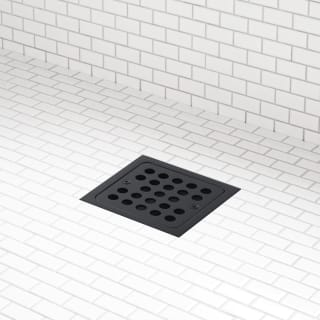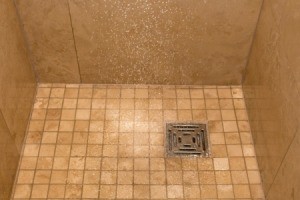DIY-Do-It-Yourself-Self-Installed Shower Drain-Bathroom Drain-Drainage System Installation-Setup-Project: A Guide-Step-By-Step Manual-Comprehensive Handbook
DIY-Do-It-Yourself-Self-Installed Shower Drain-Bathroom Drain-Drainage System Installation-Setup-Project: A Guide-Step-By-Step Manual-Comprehensive Handbook
Blog Article
Listed here down the page you might get some first-rate ideas with regards to How to Install a Shower Drain in a Basement.

Upgrading a shower room is just one of the more popular home renovation tasks. Taking care of the plumbing for draining your shower can be exceptionally easy unless you go overboard.
Managing Your Own Shower Drain Installment Job
You can physically build a collector for your brand-new shower, however you actually require to think about it. Do you actually wish to enter into the problems of obtaining the sloping appropriate, not to mention seeing to it every aspect of it is water-proof? As well as I imply every facet! It is much easier to merely buy a pre-cast collection agency online or at your regional Lowes, Residence Depot or equipment store. Structure one could seem like an excellent concept, yet you will probably feel in a different way after a number of hours.
Regardless of exactly how you go about getting a frying pan, you must strive to use one that has the drain located in the same spot as the initial pan. Relocating the drainpipe pipes can be a job, especially if the contractor used a distinct framework framework. If you are determined to relocate the drain, you are going to need to cut back the pipe or lengthen it, which might mean destroying huge portions of the floor. Put another way, you are going to be taking a look at a several weekend job.
Presuming we have our drain lined up, the actual hook up is rather straightforward. The water drainage pipe ought to be facing upright approximately the enthusiast. It will certainly commonly appear like a "U", which implies it functions as a cleanout to keep nasty scents from coming back up from the drain. To connect the drainpipe, you are mosting likely to create a water limited link between a drainpipe cap on the top of the pan and the water drainage pipe. Equipments differ, however you are typically going to do this by putting a combining item on the top of the drainage pipe. This is after that covered with gaskets as well as actually screwed into the drainpipe cap. The drain cap need to serve as a locknut, to wit, it screws straight onto the combining.
The challenging part of this procedure is getting your drainpipe cap to match a leak-proof placement in the pan. This is achieved by backing off the drainpipe cap as soon as you are sure everything fits together. At that point, you placed plumbings putty around the underside of the cap and afterwards screw it back on. The putty must form a limited seal in between the cap as well as the shower pan, which maintains water from dripping under it and also into the mounting under the shower.
Certainly, bathroom showers been available in a wide variety of designs nowadays. If you acquire an enthusiast, they often included plumbing directions or the shop can note anything unusual you ought to know. It sounds complicated, yet is typically rather easy. Have fun!
Whether you are a bathtub or shower person, many people seek shower only alternatives when getting a residence. This simple fact implies greater than a couple of home owners invest a weekend break upgrading or setting up showers in their washrooms. The good news is for you, it is a rather simple procedure.
A collector or frying pan refers to the horizontal surface area situated at the bottom of the shower. The collector commonly consists of a non-slip surface a little banked in the direction of the facility or wherever the drainpipe is located. Integrated with three to 4 inch walls around the side, the objective of your shower water drainage plumbing is to obtain the water to stream to and also down the drain.
Tips for Installing a Shower Drain Assembly
Renovating a bathroom can be exciting as well as fulfilling if you’re tackling the job DIY-style. After you cross off the bigger decisions such as tile style, paint colors, and fixtures, you’ll need to finalize smaller details – such as the shower drain. In this article, we’re sharing some tips for selecting and installing the right drain assembly for your updated shower.
What is a shower drain assembly?
Shower bases or pans typically only come with a pre-drilled drain hole. Since the pan slopes toward the drain, you should consider the placement – left, center, or right – when designing your shower. You’ll need to purchase and install a shower drain assembly that connects the shower pan to the drain pipe underneath the shower. There are a few types of assemblies, which will be covered below.
Size of a shower drain
When it comes to installing drains, size matters. The recommended pipe size for a shower drain is 2 inches, whereas most tubs use 1.5-inch pipes. Why the difference?
Shower pans are shallower than tubs, so there’s a higher risk for overflow. So, the larger pipe allows for quicker draining. If you are replacing an old tub with a newer stand-up shower, you will need to make additional plumbing adjustments to accommodate the 2-inch pipe.
Types of shower drain assemblies
There are three common types of shower drain assemblies: compression shower drain, solvent-glue shower drain, and tile shower drain. The layout, design, and materials of your shower can determine which type of shower drain assembly will work best.
Compression shower drain
This type of assembly attaches to the drain pipe with compression washers and nuts. The drain fitting is typically installed into the base, and then the base is installed into the bathroom floor. This makes compression-style drains easier to install than other options, particularly if you don’t have easy access from the floor under the shower base. Drains are available in a wide range of materials such as PVC (polyvinyl chloride), ABS (Acrylonitrile Butadiene Styrene), and brass, and can be used for acrylic, fiberglass, and steel shower bases.
Solvent-glued shower drain
Made of either polyvinyl or ABS, this type of shower drain is sealed to the drain pipe with solvent glue and silicone. Since you’ll be working underneath the drain pan, we only recommend using this type of drain if you have access under the shower, such as from a basement or crawlspace. It’s also important that you match the type of plastic of the drain with the drainpipe. If you take these precautions, you can install a solvent-glued drain assembly with acrylic, fiberglass, and steel shower bases.
Tile shower drain –
Drain assemblies for custom tile showers feature a waterproof membrane liner placed between two flanges. The tile is installed on top of the liner, collecting any water that seeps through the porous grout. A metal strainer is installed in line with the tile over the drain.
https://www.epshawaii.com/blog/tips-for-installing-a-shower-drain-assembly/

We had been shown that editorial on How to Install a Shower Drain in a Basement from an acquaintance on another blog. Appreciated our piece? Please share it. Help someone else locate it. We recognize the value of reading our article about How to Install or Replace a Shower Drain.
Report this page